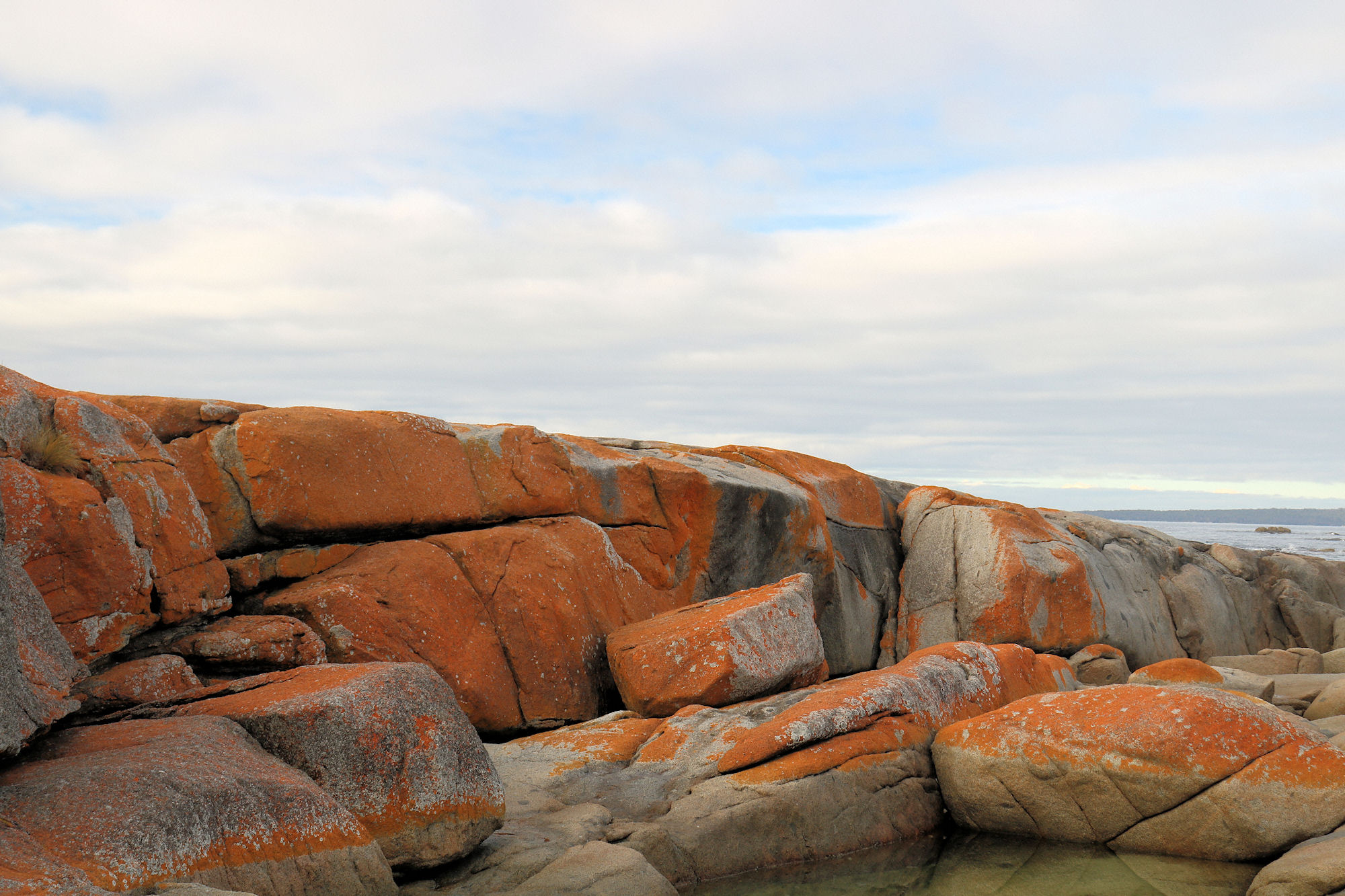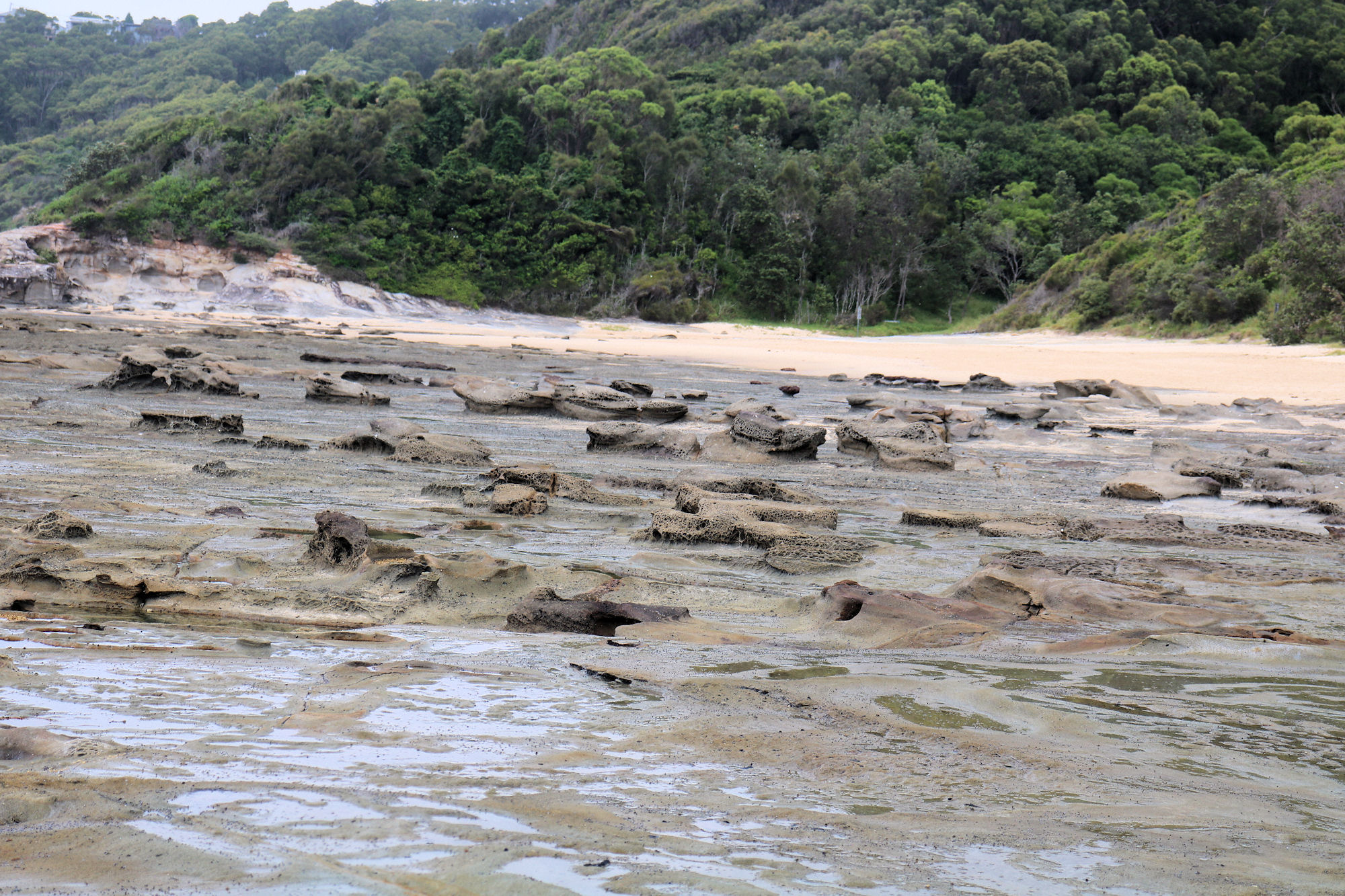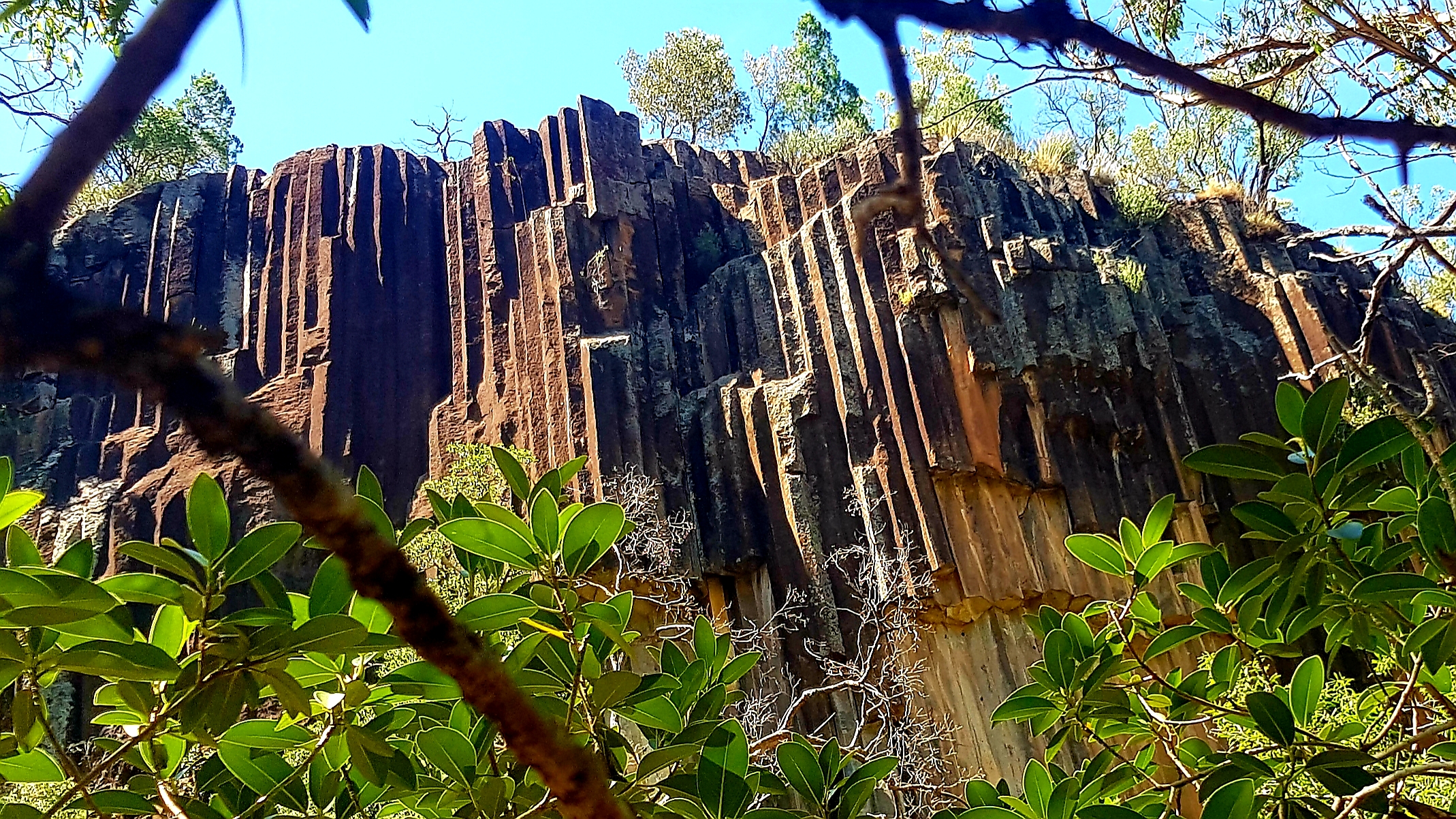Tag: geology
-
The Orange Rocks of the Bay of Fires

Bay of Fires Tasmania Famous for the stunning orange granite rocks that line the shore, The Bay of Fires is not, as we discovered named for this amazing feature. Instead, in 1773 when Captain Tobias Furneaux in Adventure, sailed past, he saw the fires of Aboriginal people on the beaches and gave it its name.… Read more
-
Dudley Beach Fossilised Forest

Dudley Beach Fossilised Forest In addition to being a great beach, Dudley Beach has a rock platform containing a fossilised forest which is visible at low tide. The area contains the remnants of tree branches and stumps, which are all that remains of an ancient forest. Getting There Located south of Newcastle, Dudley Beach has… Read more
-
Sawn Rocks Mount Kaputar National Park

Sawn Rocks Mount Kaputar National Park Getting There Located around 40 km north east of Narrabri, Sawn Rocks is a geological formation of columnar basalt which resembles organ pipes. As part of the Mount Kaputar National Park, the area is managed by NSW National Parks and Wildlife Service, which ensures it is managed correctly. The… Read more